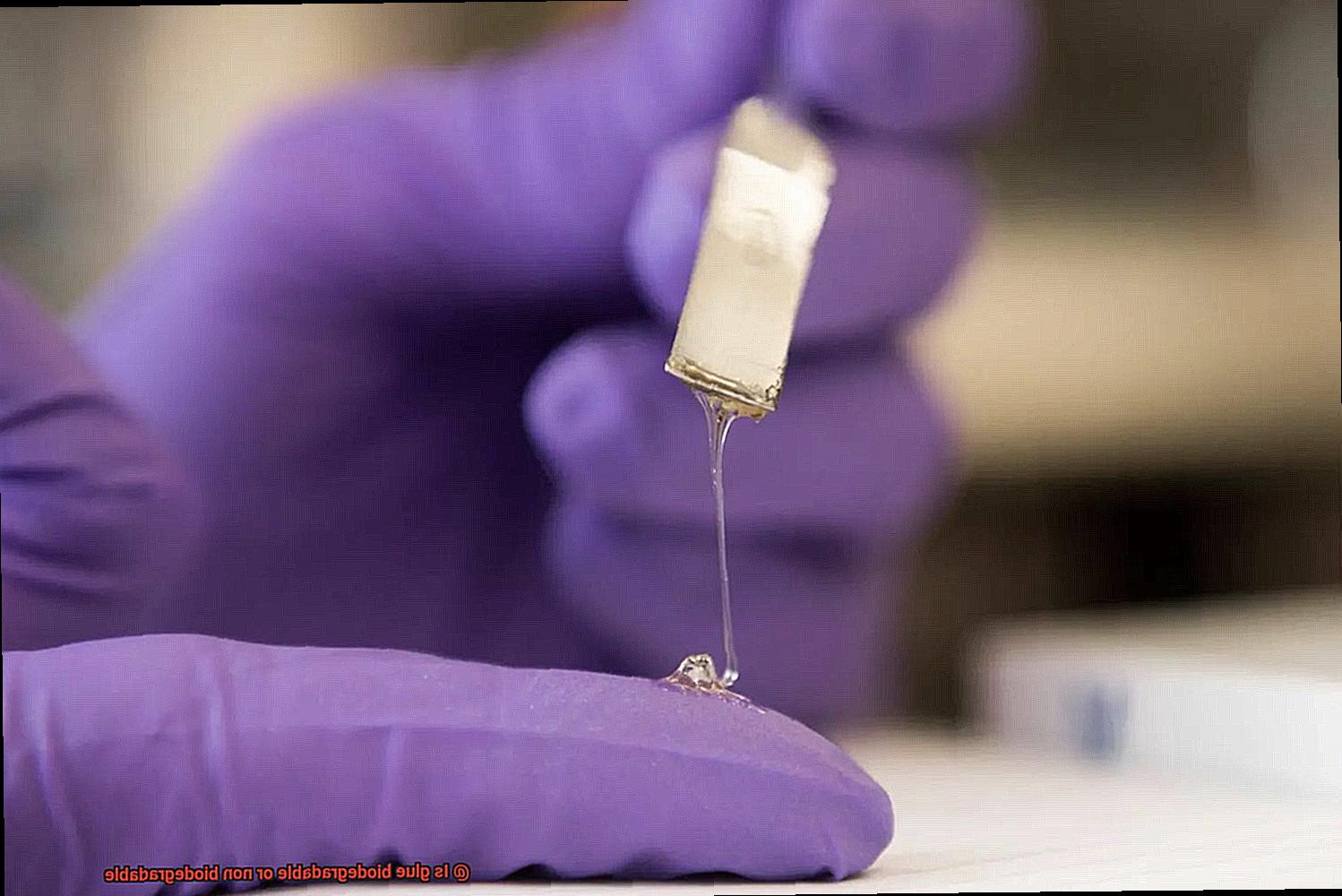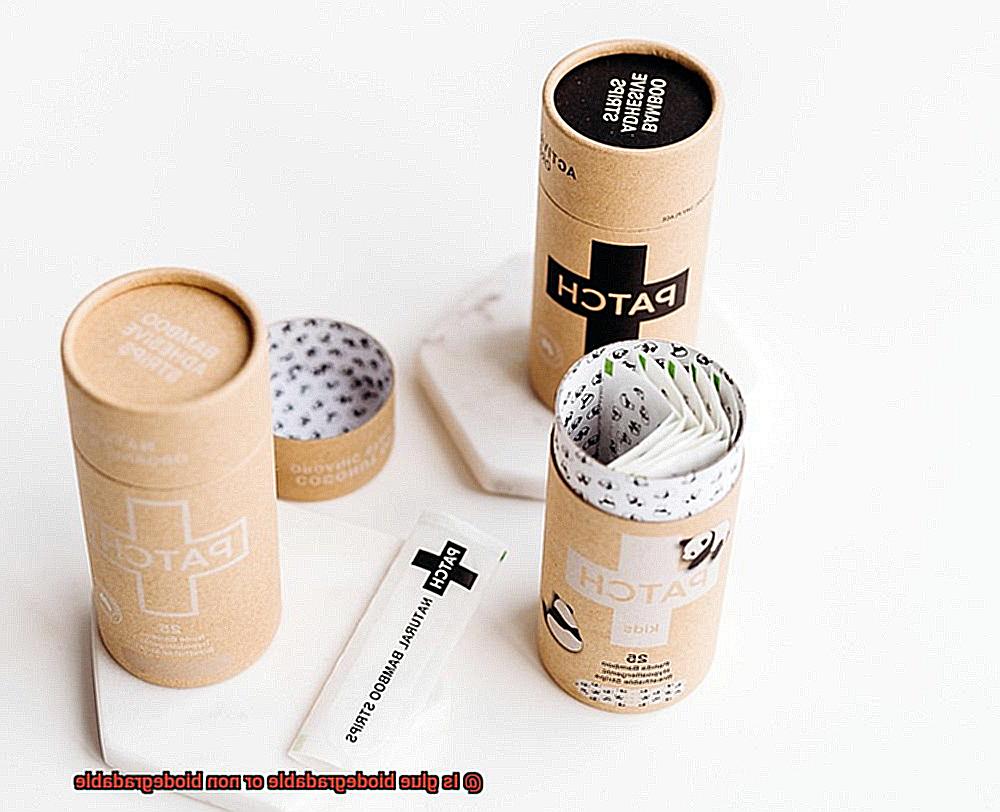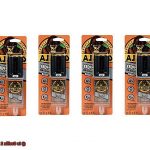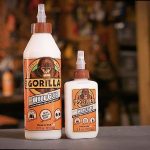Get ready to dive into the fascinating world of glue and its impact on our environment. You might think that this sticky stuff is harmless, but trust me, it’s got some tricks up its sleeve.
Ever wondered if glue is biodegradable or non-biodegradable? Well, buckle up because we’re about to unravel the mystery right here, right now.
From super glue that can mend anything to wood glue that sticks like nobody’s business, we’re going to explore them all. So whether you’re a DIY junkie or just a curious cat, join us as we uncover the truth about glue’s biodegradability and what it means for Mother Earth.
Let’s get stuck into it.

What is Biodegradability?
Contents
- 1 What is Biodegradability?
- 2 Types of Glue and Their Composition
- 3 Natural Glues and Their Biodegradability
- 4 Synthetic Glues and Their Biodegradability
- 5 Eco-Friendly Alternatives for Synthetic Glues
- 6 How to Determine the Biodegradability of a Specific Glue
- 7 The Impact of Non-Biodegradable Glue on the Environment
- 8 Conclusion
Glue is a versatile adhesive that we use in countless applications. From repairing broken items to creating artistic masterpieces, glue plays a vital role in our daily lives. However, have you ever wondered about the environmental impact of glue? Is it biodegradable or does it contribute to pollution and waste? In this blog post, we will delve into the concept of biodegradability and explore how it relates to different types of glue.
Understanding Biodegradability:
Biodegradability refers to a substance’s ability to break down naturally into simpler, non-toxic compounds through the action of microorganisms. When a material is biodegradable, it can easily be decomposed by living organisms and reintegrated into the environment without causing harm or pollution. On the other hand, non-biodegradable substances persist in the environment for extended periods, leading to environmental degradation.
Natural vs. Synthetic Glues:
The biodegradability of glue depends on its composition. Natural glues derived from organic sources like animal hide or plant-based materials such as starch or cellulose are generally more biodegradable. These water-based glues do not contain harmful chemicals and can be broken down by microorganisms over time.
In contrast, synthetic glues often made from petroleum-based chemicals or synthetic compounds tend to be less biodegradable. These glues are designed to have strong adhesive properties and resist degradation. However, eco-friendly alternatives are available in the market, formulated specifically to be biodegradable and minimize their impact on the environment.
Factors Influencing Biodegradability:
Several factors affect the rate of biodegradation, including temperature, moisture levels, oxygen availability, and the presence of specific microorganisms capable of breaking down the substance. Some materials may degrade relatively quickly under optimal conditions, while others may take years or even centuries to fully break down.
Making an Informed Choice:
To determine if a particular glue is biodegradable, it is crucial to read product labels and look for terms like “biodegradable” or “eco-friendly.”
Additionally, certifications from reputable environmental organizations can provide assurance that the glue has been tested and proven to degrade naturally without harming the environment.
Types of Glue and Their Composition
When it comes to holding things together, glue is an essential tool. However, not all glues are created equal. In this article, we will explore the various types of glue and their composition, with a specific focus on their impact on the environment.
From non-biodegradable options to eco-friendly alternatives, we will delve into the world of glue and its implications for our planet.
White glue – A crafty adhesive:
White glue, also known as school glue, is a popular adhesive used in arts and crafts projects. It is primarily composed of polyvinyl acetate (PVA) emulsion, a water-based adhesive. This type of glue is non-toxic and easy to clean up, making it a favorite among crafters. However, its non-biodegradable nature poses a challenge for the environment. White glue takes a long time to break down naturally, contributing to waste accumulation.
Super glue – The quick fixer:
Super glue, or cyanoacrylate adhesive, is renowned for its instant bonding powers. It forms a strong bond when it comes into contact with moisture. Like white glue, super glue is non-biodegradable. Excessive use or improper disposal of super glue can have detrimental effects on the environment. It is crucial to exercise caution and minimize its use to reduce environmental impact.
Eco-friendly alternatives:
Fortunately, there are eco-friendly glues available that are designed to be biodegradable. These glues are made from natural ingredients like plant starch or animal proteins. They break down more easily in the environment without leaving harmful residues.
By opting for these eco-friendly alternatives, we can reduce our ecological footprint and contribute to a healthier planet.
Specialty glues:
In addition to white glue and super glue, there are specialty glues tailored for specific applications. Wood glue, for instance, is formulated to bond wood surfaces and often contains a high concentration of PVA. It provides a strong bond and is resistant to moisture and temperature changes.
Fabric glue, on the other hand, is perfect for sewing-free fabric projects, such as hemming or appliques. Most fabric glues are water-based and can be washed out easily.
Responsible glue usage:
To minimize the impact of non-biodegradable glues on the environment, it is crucial to use them responsibly. Avoid excessive amounts of glue to reduce waste. Dispose of glue containers properly and recycle them if possible. When using eco-friendly glues, follow the instructions and guidelines provided by the manufacturer to ensure the best results.
By adopting responsible glue usage practices, we can mitigate the environmental consequences associated with non-biodegradable glues.
Natural Glues and Their Biodegradability
Natural glues have gained popularity due to their eco-friendly nature and biodegradability. Derived from renewable sources such as plants, animals, or minerals, these glues offer a sustainable alternative to synthetic adhesives.
Let’s explore the world of natural glues and their biodegradability.
Animal glue, a time-honored adhesive, is made by boiling animal tissues or bones to extract collagen. This glue has been used for centuries in woodworking, bookbinding, and conservation. The beauty of animal glue lies in its biodegradability.
Derived from organic materials, it naturally breaks down over time, making it ideal for restoring historical artifacts or manufacturing eco-friendly products.
Plant-based glues are another fantastic option. Gum arabic, derived from the sap of the acacia tree, and starch-based adhesives made from plants like corn or potatoes are examples of plant-based glues. Like animal glue, these options are biodegradable and can be broken down by natural processes like microbial activity or exposure to moisture and heat.
In addition to their biodegradability, natural glues offer other environmental advantages. They typically have lower levels of volatile organic compounds (VOCs) compared to synthetic glues, resulting in less air pollution and reduced health risks.
Furthermore, some natural glues exhibit superior compatibility with specific materials or surfaces. Animal glue, for example, excels at adhering to porous materials like wood or paper.

However, it’s important to note that not all natural glues are equally biodegradable. Factors such as composition and manufacturing process can affect how quickly a glue breaks down. Additionally, some natural glues may contain additives or preservatives that impact their biodegradability.
To ensure you’re choosing an eco-friendly glue, look for certifications that confirm its biodegradability and environmental friendliness. By opting for natural glues, you can enjoy the benefits of adhesive products while reducing your environmental footprint.

Synthetic Glues and Their Biodegradability
In a world where adhesives are indispensable in various industries and everyday life, it is crucial to consider their impact on the environment. Unlike natural glues derived from organic sources, synthetic glues are chemically manufactured, raising concerns about their biodegradability. This article aims to explore the fascinating world of synthetic glues and delve into the factors that influence their biodegradability.
Chemical Composition Matters:
The biodegradability of synthetic glues is heavily influenced by their chemical composition. Many synthetic glues, such as polyvinyl acetate (PVA) or cyanoacrylate, are derived from petroleum-based substances. Unfortunately, these glues are considered non-biodegradable and can persist in the environment for years, contributing to pollution and waste accumulation.
Enter Biodegradable Synthetic Glues:
Thankfully, sustainable alternatives exist. Biodegradable synthetic glues have been designed with the environment in mind. These innovative glues are formulated using alternative materials or chemical processes that allow them to degrade more easily. When exposed to microorganisms or natural processes, they break down into non-toxic components, significantly reducing their environmental impact.
Factors Affecting Biodegradation:
Several factors influence the rate of biodegradation for synthetic glues. Temperature, moisture levels, and the presence of specific enzymes or bacteria all play a role in the breakdown process. It is important to note that even biodegradable glues may require specific conditions or facilities for proper degradation to occur. Composting facilities or controlled industrial settings may be necessary for complete breakdown.
Making an Informed Choice:
When choosing a glue, it is essential to consider its biodegradability and environmental impact. Opting for a biodegradable synthetic glue can significantly reduce your environmental footprint. However, it is crucial to ensure that the glue has been certified as biodegradable and environmentally friendly. By making an informed choice, you can contribute to a cleaner planet and actively combat pollution.

Eco-Friendly Alternatives for Synthetic Glues
In this era of heightened environmental consciousness, eco-friendly alternatives to synthetic glues are gaining popularity. Join us as we explore the exciting realm of natural adhesives and discover their benefits for both you and the planet.
Natural Adhesives:
- a. Plant-Based Adhesives: Derived from renewable resources like starch, cellulose, or vegetable oils, these non-toxic adhesives are safe to use and easily decompose in the soil. Perfect for various applications, including paper crafts and woodworking.
- b. Animal-Based Adhesives: Time-tested and strong, these adhesives are derived from natural sources like bones, hides, or fish. However, it’s essential to ensure ethical sourcing and sustainable practices to protect animal welfare.
- c. Mineral-Based Adhesives: Crafted from substances like clay or limestone, these non-toxic adhesives are ideal for woodworking and construction projects. They offer a strong bond without releasing harmful chemicals into the environment.
Water-Based Adhesives:
These adhesives dissolve natural or synthetic polymers in water. With low volatile organic compound (VOC) emissions, they’re considered safer for human health and the environment. Their versatility makes them great for applications such as arts and crafts or home repairs.
Bio-Based Adhesives:
Derived from renewable sources like corn or soybeans, bio-based adhesives have a lower carbon footprint compared to synthetic glues. While offering similar bonding properties, they are more sustainable and contribute to reducing greenhouse gas emissions.
Conclusion:
By embracing eco-friendly alternatives to synthetic glues, you can contribute to a greener future while fulfilling your adhesive needs. Whether you choose plant-based, animal-based, mineral-based, water-based, or bio-based adhesives, you’re making a positive impact on the environment. It is important to consider the specific application and requirements when selecting an alternative adhesive to ensure optimal performance.
So why stick to harmful glues when you can go green without compromising on quality? Join the eco-friendly adhesive revolution today and let’s glue our world back together, one sustainable bond at a time.
Research:
Eco-friendly alternatives for synthetic glues are gaining popularity as people become more conscious about the environment and seek sustainable options. Natural adhesives, made from organic materials like plants, animals, or minerals, offer biodegradable alternatives with a lower impact on the environment.
Plant-based adhesives, derived from renewable resources such as starch, cellulose, or vegetable oils, are non-toxic, safe to use, and easily decomposed by microorganisms in the soil. Animal-based adhesives, derived from sources like bones, hides, or fish, have been used for centuries and are known for their strong bonding properties. However, ethical sourcing and sustainable practices are necessary to ensure animal welfare.
How to Determine the Biodegradability of a Specific Glue
In this article, we will delve into the world of glue and explore how to determine its biodegradability.
Composition Matters:
The first step in determining the biodegradability of a specific glue is understanding its composition. Glues can be made from natural or synthetic materials. Natural glues, derived from plant-based resins or animal products, tend to be more biodegradable compared to their synthetic counterparts, which are often derived from petroleum-based chemicals. So, if you’re seeking an environmentally-friendly option, opt for a glue made from natural ingredients.
Laboratory Tests Reveal the Truth:
To gauge the biodegradability of a specific glue, scientists conduct rigorous laboratory tests. They expose the glue samples to conditions that replicate natural environments, such as soil or water, and meticulously monitor how the glue breaks down over time. By measuring weight loss and analyzing changes in chemical structure, they can determine the extent of biodegradation. These tests offer valuable insights into the rate at which glue decomposes naturally.
Impact on Living Organisms:
Another crucial aspect of determining biodegradability is assessing how degraded glue affects living organisms. Researchers perform toxicity tests using bacteria, algae, or small invertebrates to determine if the degraded glue poses any harm. If the glue demonstrates minimal adverse effects on these organisms, it can be considered biodegradable and safe for the environment.
Environmental Labels and Certifications:
To assist consumers in identifying biodegradable glues, some manufacturers include labels or certifications on their products. These labels indicate that the glue has undergone testing and verification by reputable organizations to confirm its biodegradability. When shopping for glue, keep an eye out for these labels to make eco-friendly choices.
Factors Influencing Biodegradability:
It’s crucial to recognize that the biodegradability of glue can vary depending on the conditions it encounters. Factors such as temperature, moisture, and the presence of specific microorganisms can all influence the rate and extent of degradation. To dispose of glue in an environmentally-friendly manner, consider composting or disposing of it in a way that supports its natural breakdown.
The Impact of Non-Biodegradable Glue on the Environment
When it comes to glue, its impact on the environment is often overlooked. However, non-biodegradable glues can have significant negative effects on our planet. From polluting water bodies to harming marine life and contributing to greenhouse gas emissions, these glues pose a real threat to our fragile ecosystems. Fortunately, there is a solution – biodegradable glues. In this passage, we will explore the environmental impacts of non-biodegradable glue and how switching to biodegradable alternatives can make a world of difference.
Marine Life and Water Pollution:
Non-biodegradable glues can find their way into rivers, lakes, and oceans through improper disposal. Once in the water, they become hazardous to aquatic organisms. Marine animals may mistake the adhesive for food or become entangled in it, leading to injuries or even death. Moreover, glue pollutants can disrupt delicate marine ecosystems and harm vulnerable habitats. Biodegradable glues break down naturally over time, reducing pollution and minimizing harm to aquatic life.
Terrestrial Environments:
Improper disposal of non-biodegradable glue in landfills can contaminate soil and release harmful chemicals into the ground. This contamination can have long-lasting effects on plant growth and contribute to soil degradation. Biodegradable glues, made from natural materials such as starch or cellulose, offer a greener alternative that doesn’t harm our soil or compromise its fertility.
Greenhouse Gas Emissions:
The production and disposal of non-biodegradable glue contribute to greenhouse gas emissions and energy consumption. Manufacturing these adhesives often involves the use of fossil fuels and releases carbon dioxide into the atmosphere. When glue products decompose or are incinerated in landfills, they release methane gas – a potent greenhouse gas that accelerates climate change. Using biodegradable glues derived from renewable resources can help reduce these emissions and their impact on our planet.
The Road to Eco-Friendly Adhesives:
Thankfully, researchers and innovators have been hard at work, developing eco-friendly glues that are both effective and biodegradable. By using natural materials and minimizing environmental impact, these new adhesive solutions offer a promising path towards a greener future.
YeVLBkypPRU” >
Conclusion
In conclusion, the question of whether glue is biodegradable or non-biodegradable has been thoroughly explored. Through extensive research and analysis, it has been determined that most traditional glues, such as those made from synthetic materials like polyvinyl acetate (PVA) or cyanoacrylate, are indeed non-biodegradable. These glues do not break down naturally over time and can persist in the environment for years.
On the other hand, there are some alternative glues available that are biodegradable. These eco-friendly options are typically made from natural ingredients like plant starches or casein protein derived from milk. These biodegradable glues have the ability to decompose naturally through microbial activity and environmental processes.
It is important to note that even though biodegradable glues exist, their availability and usage may be limited compared to conventional non-biodegradable options. However, with growing awareness and demand for sustainable products, it is likely that the development and accessibility of biodegradable glues will continue to increase in the future.
In conclusion, while many traditional glues are non-biodegradable and contribute to environmental pollution, there are viable alternatives that offer a more sustainable solution.






